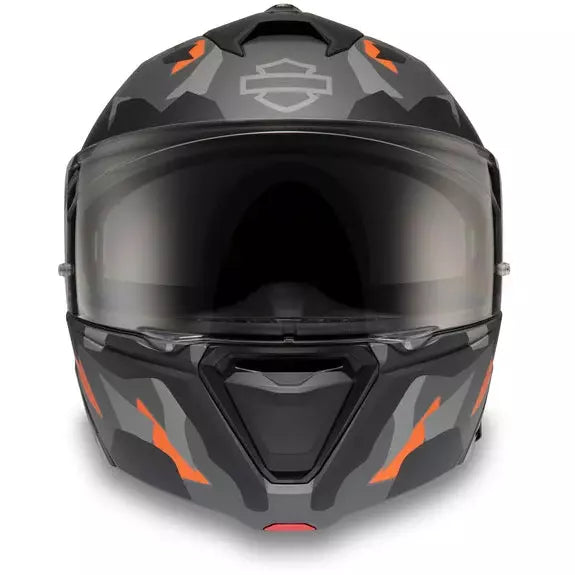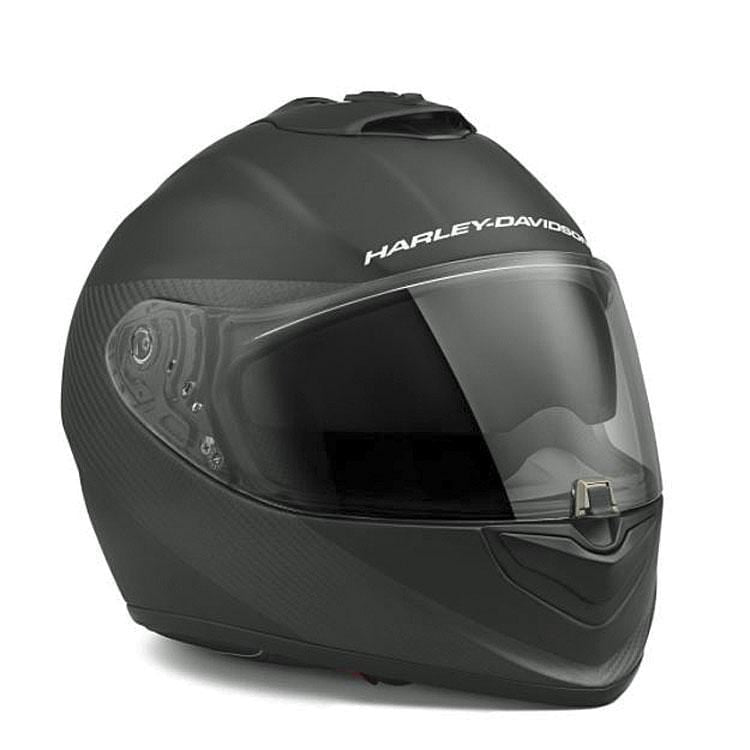The Ultimate Guide to Motorcycle Helmets: Safety and Comfort on the Road
Introduction:
- Helmets reduce risk of death by 37% and head injury by 69%.
- DOT, ECE, and Snell certifications ensure safety standards.
- Polycarbonate and composite materials for shell construction.
Comfort and Fit:
- Proper fit is essential for safety and comfort.
- Ventilation systems keep the head cool and dry.
- Removable and washable comfort liners enhance hygiene.
Types of Helmets:
- Full-face: Highest protection, ideal for long-distance riding.
- Modular: Flip-up front for convenience, suitable for various riding styles.
- Half: Less protection, popular for open feel and ventilation.
- Off-road: Designed for dirt bike riding, with extended peaks and improved ventilation.
Enhanced Functionality:
- Visors with tints, anti-fog, and scratch-resistant coatings.
- Pinlock systems prevent fogging in cold or humid conditions.
- Bluetooth-enabled helmets for communication and music.
Helmet Maintenance:
- Regular cleaning with mild detergent and water.
- Inspect for damage and replace if necessary.
- Store in a cool, dry place away from direct sunlight or heat sources.
Choosing the Right Helmet:
- Consider head shape, riding style, and intended use.
- Set a budget and compare helmets within your price range.
Conclusion:
- Invest in a high-quality helmet for safety and comfort.
- Always wear a helmet while riding, as it's the single most effective protection.
The Ultimate Guide to Motorcycle Helmets: Ensuring Safety and Comfort on the Road
When it comes to motorcycle riding, safety should always come first. A crucial piece of safety gear for every rider is a well-fitting and high-quality helmet. Helmets play a vital role in protecting your head and reducing the risk of severe injuries in case of an accident. In this comprehensive guide, we'll delve into the world of motorcycle helmets, covering safety features, comfort factors, types, and maintenance tips to help you make an informed decision when choosing a helmet that suits your needs.
I. Introduction: The Importance of Motorcycle Helmets
According to the National Highway Traffic Safety Administration (NHTSA), wearing a helmet while riding a motorcycle can reduce the risk of death by 37% and the risk of head injury by 69%. Helmets are designed to absorb and distribute the impact of a collision, providing a protective barrier between your head and the road or other objects. They also help prevent facial injuries by covering the face and reducing the risk of lacerations and abrasions.
II. Safety Features: Standards and Materials
-
DOT and ECE Certifications:
- The Department of Transportation (DOT) in the United States and the Economic Commission for Europe (ECE) in Europe set safety standards for motorcycle helmets. These certifications ensure that helmets meet specific requirements for impact absorption, penetration resistance, and retention system effectiveness.
-
Snell Memorial Foundation:
- The Snell Memorial Foundation is a non-profit organization that conducts independent helmet testing and awards ratings based on their stringent safety criteria. Snell-rated helmets offer an additional level of protection beyond DOT and ECE standards.
-
Shell Materials:

Title: HARLEY DAVIDSON® CAPSTONE CAMO SUN SHIELD II H31 MODULAR HELMET
Price: £247.33
SHOP NOW- Motorcycle helmets commonly use two types of shell materials:
- Polycarbonate: A lightweight and affordable material that provides good impact resistance.
- Composite Materials: Typically made from fiberglass, carbon fiber, or a combination of materials, these helmets offer enhanced strength and protection while being lightweight.
- Motorcycle helmets commonly use two types of shell materials:
III. Comfort and Fit: For a Snug and Pleasant Ride
-
Proper Fit:
- A proper fit is essential for both safety and comfort. The helmet should fit snugly around your head without causing pressure points or discomfort. Check for any gaps, especially around the forehead, temples, and cheeks.
-
Ventilation Systems:
- Adequate ventilation is crucial to keep your head cool and dry during long rides. Look for helmets with vents or channels that allow air to flow through the helmet, reducing sweat buildup.
-
Comfort Lining:
- Removable and washable comfort liners contribute to hygiene and allow for easy cleaning. Check if the helmet's liner is made from breathable and absorbent materials to enhance comfort.
IV. Types of Motorcycle Helmets: For Different Riding Styles
-
Full-Face Helmets:

Title: HARLEY-DAVIDSON® BRAWLER SUN SHIELD X09 MATTE BLACK FULL FACE HELMET
Price: £449.70
SHOP NOW- Full-face helmets offer the highest level of protection, covering the entire head, face, and chin. They provide excellent noise reduction and are ideal for long-distance riding or high-speed riding.
-
Modular Helmets:
- Modular helmets, also known as flip-up helmets, combine the full-face protection with the convenience of a flip-up front. The chin bar can be lifted up, allowing for easy conversation or drinking without removing the helmet.
-
Half Helmets:
- Half helmets provide partial coverage, exposing the face. They offer less protection compared to full-face or modular helmets but are popular for their open feel and increased ventilation.
-
Off-Road Helmets:
- Off-road helmets are specifically designed for dirt bike riding. They feature extended peaks to shield the rider from sun, roost, and debris, along with improved ventilation for off-road conditions.
V. Features for Enhanced Functionality: Convenience and Safety
-
Visors and Shields:
- Tinted visors or shields protect your eyes from the sun, while anti-fog and scratch-resistant coatings enhance visibility. Some helmets offer interchangeable visors for different light conditions.
-
Pinlock Systems:
- Pinlock systems are anti-fog inserts that attach to the inside of the visor, creating an airtight seal to prevent fogging. These systems ensure clear vision during cold or humid weather conditions.
-
Communication Systems:
- Bluetooth-enabled helmets allow riders to connect to their smartphones for music, GPS navigation, and intercom communication with fellow riders, enhancing safety and convenience.
VI. Helmet Maintenance: Ensuring Longevity and Protection
-
Cleaning and Care:
- Regularly clean the helmet's exterior with a mild detergent and water. Use a soft cloth or microfiber towel to avoid scratching the surface. For the interior, remove the comfort liner and hand-wash it with a mild soap solution.
-
Regular Inspections:
- Inspect the helmet for any signs of damage, such as cracks, dents, or loose components. Check the chin strap and buckle for proper functioning. Replace the helmet if it has sustained significant damage.
-
Storage:
- Store the helmet in a cool, dry place away from direct sunlight or heat sources. Avoid storing the helmet with heavy objects on top of it, as this can cause deformation.
VII. Choosing the Right Helmet: For Your Safety and Comfort
-
Head Shape and Helmet Fit:
- Different helmet brands and models have different shapes that may suit different head shapes better. Try on several helmets to find one that fits snugly and comfortably without causing pressure points.
-
Riding Style and Intended Use:
- Consider your riding style and intended use when choosing a helmet. For long-distance touring, a full-face helmet with good ventilation is ideal. For off-road riding, choose a helmet with an extended peak and dirt-specific features.
-
Budget Considerations:
- Helmets come in a wide range of prices. Set a budget and compare helmets within your price range, considering the safety features, comfort factors, and additional features that are important to you.
VIII. Conclusion: Invest in Safety and Comfort
Investing in a high-quality motorcycle helmet is an investment in your safety and comfort. By choosing a helmet that meets safety standards, fits properly, and offers the features you need, you can enjoy a more enjoyable and safer riding experience. Always remember to wear your helmet whenever you ride, as it's the single most effective way to protect yourself in case of an accident.
"In a world where safety comes first, a high-quality motorcycle helmet is your trusted companion. Choose wisely, ride safely, and embrace the joy of the open road."
Additional Resources:
- Why Wear a Motorcycle Helmet?
- Helmet Safety Standards
- How to Choose a Motorcycle Helmet
- Motorcycle Helmets: A Buyer's Guide
Frequently Asked Questions (FAQs)
1. What are the key safety features to consider when choosing a motorcycle helmet?
A. Look for helmets that meet DOT or ECE standards and have a Snell rating for added protection. Consider shell materials like polycarbonate or composite materials for impact resistance.
2. How do I ensure a proper fit for my motorcycle helmet?
A. The helmet should fit snugly around your head without causing pressure points or gaps. Check for a snug fit around the forehead, temples, and cheeks. A properly fitted helmet should not move excessively when you shake your head.
3. What are the different types of motorcycle helmets available?
A. Common types include full-face helmets for maximum protection, modular helmets for convenience, half helmets for an open feel, and off-road helmets for dirt bike riding.
4. What are some features that enhance the functionality of a motorcycle helmet?
A. Consider helmets with tinted visors for sun protection, anti-fog coatings for clear vision, or Pinlock systems to prevent fogging. Bluetooth-enabled helmets offer added convenience for music, navigation, and communication.
5. How should I clean and maintain my motorcycle helmet?
A. Regularly clean the exterior with mild detergent and water, and hand-wash the removable comfort liner. Inspect the helmet for damage and replace it if necessary. Store the helmet in a cool, dry place away from direct sunlight.
6. How do I choose the right helmet for my head shape and riding style?
A. Different helmets have different shapes. Try on several helmets to find one that fits your head shape comfortably. Consider your riding style and intended use when choosing a helmet type, such as a full-face helmet for long-distance touring or an off-road helmet for dirt biking.
7. How much should I budget for a motorcycle helmet?
A. Helmets come in a range of prices. Set a budget and compare helmets within your price range, considering safety features, comfort factors, and additional features that matter to you.
8. Why is wearing a motorcycle helmet important?
A. Wearing a helmet significantly reduces the risk of death and head injuries in a motorcycle accident. Helmets provide protection by absorbing and distributing the impact of a collision, reducing the risk of severe injuries.
Explore More:
- [KTM Gear] Explore Fiercely Functional Styles for Thrilling Rides
- [Motorcycle Apparel] Be the Master of Your Ride, Dress to Impress
- [Motorbike Pants] Gear Up with Style and Protection: Feel the Freedom
- [Motorcycle Riding Gear] Connect with Your Ride: Discover the Ultimate Gear
- [Motorcycle Gloves] Grip Every Moment: Gloves for Unmatched Control
- [Triumph Apparel] Engineered for Excellence: Elevate Your Triumph Experience
- [Motorbike Helmet] Safety Meets Style: Helmets for the Fearless

